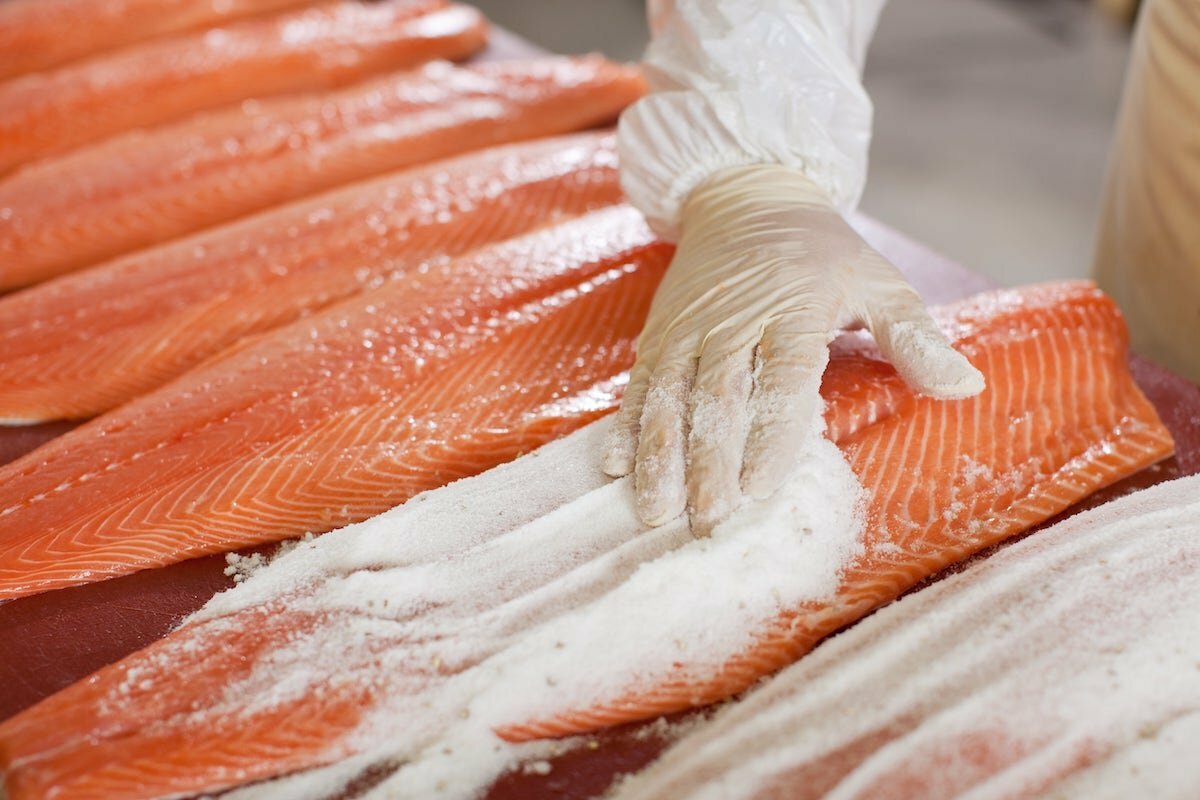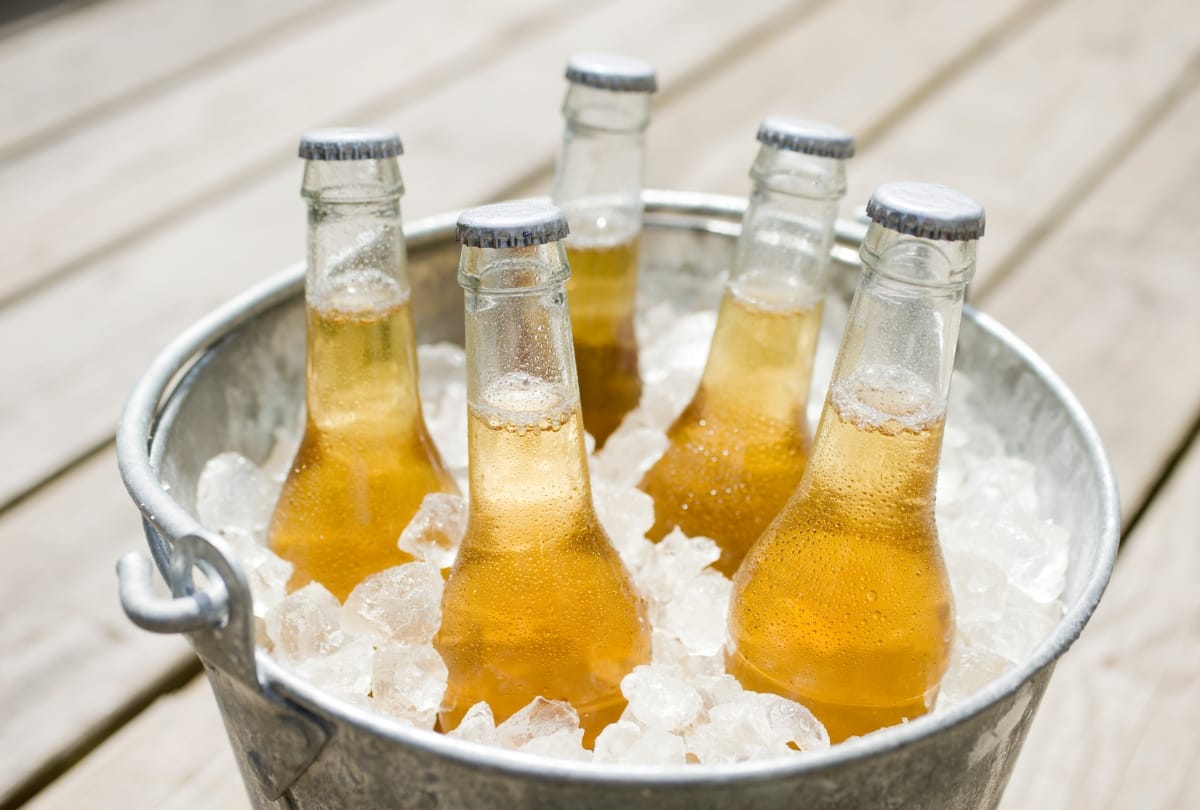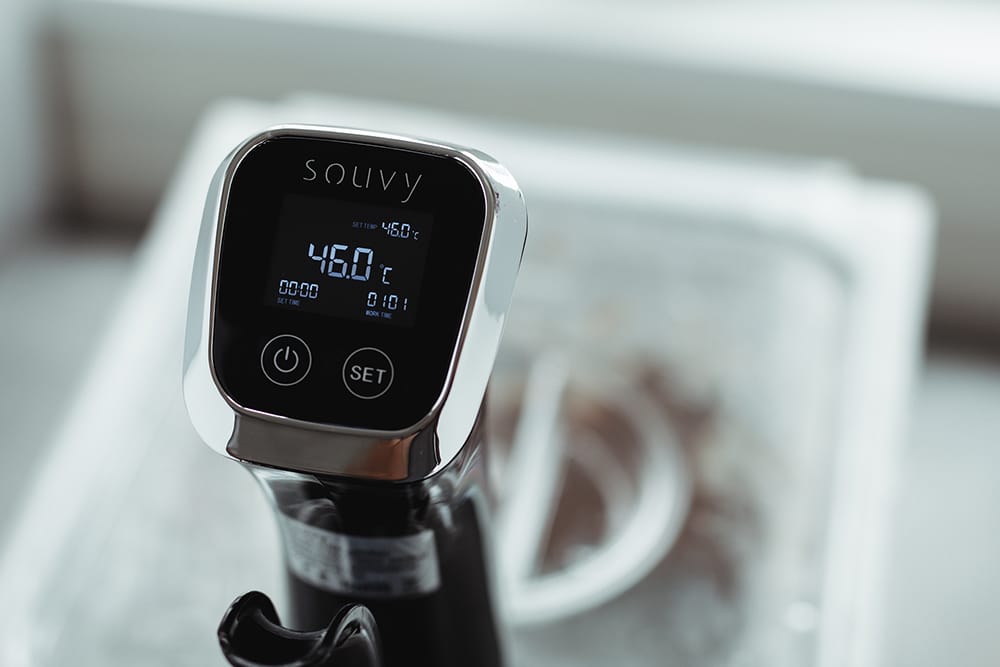If you want to make meat or fish more tender, you can marinate it. You can also do this in salt water! With brining, a dry chicken fillet is now a thing of the past.
What is pickling?
Brining is an age-old technique for preserving food. There was a time when there were no refrigerators or freezers available. Brining allowed the slaughtered meat to be eaten during the winter months. Nowadays, we hardly use the technique of brining to make food last longer. We now mainly brine for the taste and to make the meat more tender.
Brining food is also not complicated at all. You don’t need any special kitchen tools for it. You probably already have the ingredients for brining at home. Brining involves marinating the piece of meat or fish in water to which a certain amount of salt has been added.
What can you pickle?
Pickling has been done for hundreds of years to prevent food from spoiling quickly or to provide more flavour. The technique of pickling is therefore deeply rooted in Dutch cuisine. There is therefore a great chance that you already regularly eat food that has been pickled.
Well-known examples of pickled food are for example the Hollandse Nieuwe herring which is pickled in salt water. Salmon and mackerel are also always pickled before we cold smoke them. But also when making cheese the freshly pressed cheese is put in the brine. Actually you can pickle everything.
Wet or dry pickling
There are a number of ways to pickle. Depending on the desired result, you can choose between a wet brine or a dry brine. In America, brining is very popular and both brining methods have different terms there. 'Brining' is similar to our wet brine. Pickling in salt, our dry brine, is known as 'curing'.
A dried ham or a dried fish such as stockfish or cod are pickled in salt. The salt concentration is therefore high and therefore these products have a longer shelf life. A cooked ham is pickled therefore has a lower salt concentration and therefore has a shorter shelf life than a product that is dry pickled.
Dry brine
With a dry brine, you only use salt and no water. By rubbing salt onto a product and then letting it soak in, the salt will extract moisture from the meat. Weight is often used for this to put extra pressure on the product. Sometimes with extra herbs and spices, for example in the case of Gravad Lax – the Norwegian cured salmon.
The result of dry brine is different from the wet variant. The concentration of salt will exceed six percent on the surface of the product. The result is that the salt will extract moisture from the meat and therefore have a longer shelf life, but the tissue structure of the product will also change.
Wet brine
A wet brine uses considerably less salt. Most people experience the taste of wet brine as tasty and much less salty than dry-brined food.
Because less salt is used in a wet brine, the product will actually absorb water. The salt will dissolve in the water and concentrate on the surface of the muscle cells. The ions repel each other, just like two negative magnetic poles, and space is created in the muscle cells. The meat will therefore absorb water and increase in weight. Read more about the chemical process of brining here .
The fact that the meat contains more water is one of the biggest advantages of brining. Meat always loses moisture during baking, which means that if you bake it for too long, it will become dry and tough. When you brine meat, it contains more moisture. Brining will, just like with sous-vide, ensure more tender meat . The added salt will also make the meat more flavorful.
How to brine meat
The recipe for wet-brining meat is quite short. And actually quite simple. To brine, you don't need anything other than water and salt. If you want, you can add extra flavourings to the water. Bay leaves, freshly cut peppers, ginger, honey, ketjap or just sugar. All flavourings that provide extra flavourful meat.
Add sugar
Apart from the taste, there is another reason for using sugar in the brining process. The sugar does not affect the structure of the meat, but it will ensure better browning. The sugar added during the brining process and the proteins in the meat are a good combination for a nice Maillard reaction.
What type of salt for pickling?
In principle, you can use any type of salt to pickle. Sea salt is always a good choice, but other types such as normal table salt or the more expensive Fleur de Sel can also be used.

How much salt do you need?
The amount of salt you need when wet-curing meat or fish depends on the total weight of the product and the water. A salt concentration of about 10% is common. Do not use more water than is necessary to cover the product and add the weight of the meat and the water together. Of that you take one hundredth part as the amount of salt and dissolve it in the water.
Basic recipe for curing meat
This recipe is a good starting point for curing meat. You can optionally choose to add other seasonings. You can vary this to your own taste, thyme, garlic, juniper berries, cinnamon, ginger or lemon peel.
The ingredients
- 0.5 liter boiling water
- Bay leaves, about 5
- 100 grams of salt (for example sea salt)
- 1 tablespoon cloves
- 1 tablespoon peppercorns
- 50 grams of sugar
Roadmap
- First, determine how much brine you need to make. Place the meat in a bowl or container and add enough water to cover the meat. Remove the meat from the container and measure the amount of water. That is the amount of brine you need to make.
- We use between 50 and 75 grams of salt per liter of water.
- Bring half a liter of water to the boil and dissolve the required amount of salt and sugar in it. You can also use other flavorings. The sugar ensures better browning later when frying the meat. When the salt and sugar have dissolved, you can add the rest of the water.
- Place the meat in the cooled brine and cover with foil. Place the container in the refrigerator. Allow 2 hours of marinating per 500 grams of meat.
- After the meat has marinated long enough, remove it from the brine. Pat it dry with kitchen paper. Large pieces of meat or poultry are best left uncovered to dry for a few hours. This will ensure a crispier crust when baking or roasting.



7 comments
yu-givan@hotmail.com
Hi Rick,
Ja hoor, dat is zeker mogelijk.
rick.spierings@spieringsoptiek.nl
Ik heb het stuk over pekelen gelezen.
Je kunt toch ook pekelen in een vacuumzak?
Je kunt dan het gewicht van het product en de hoeveelheid water nemen dat je in de zak bij het product doet. Of je voegt 0.50 liter water toe met daar in opgelost 30 gram zout.
Leave a comment
This site is protected by hCaptcha and the hCaptcha Privacy Policy and Terms of Service apply.